Essential role of immobilized chemokine CXCL12 in the regulation of the humoral immune response
- PMID: 28193885
- PMCID: PMC5338526
- DOI: 10.1073/pnas.1611958114
Essential role of immobilized chemokine CXCL12 in the regulation of the humoral immune response
Abstract
Chemokines control the migration of a large array of cells by binding to specific receptors on cell surfaces. The biological function of chemokines also depends on interactions between nonreceptor binding domains and proteoglycans, which mediate chemokine immobilization on cellular or extracellular surfaces and formation of fixed gradients. Chemokine gradients regulate synchronous cell motility and integrin-dependent cell adhesion. Of the various chemokines, CXCL12 has a unique structure because its receptor-binding domain is distinct and does not overlap with the immobilization domains. Although CXCL12 is known to be essential for the germinal center (GC) response, the role of its immobilization in biological functions has never been addressed. In this work, we investigated the unexplored paradigm of CXCL12 immobilization during the germinal center reaction, a fundamental process where cellular traffic is crucial for the quality of humoral immune responses. We show that the structure of murine germinal centers and the localization of GC B cells are impaired when CXCL12 is unable to bind to cellular or extracellular surfaces. In such mice, B cells carry fewer somatic mutations in Ig genes and are impaired in affinity maturation. Therefore, immobilization of CXCL12 is necessary for proper trafficking of B cells during GC reaction and for optimal humoral immune responses.
Keywords: CXCL12; germinal center reaction; humoral immune responses.
Conflict of interest statement
The authors declare no conflict of interest.
Figures
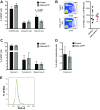
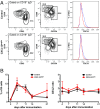
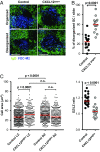
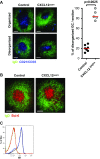
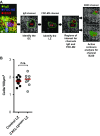
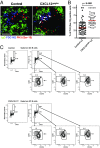
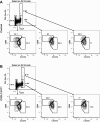
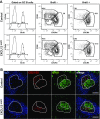


Similar articles
-
Syndecan 4 Regulation of the Development of Autoimmune Arthritis in Mice by Modulating B Cell Migration and Germinal Center Formation.Arthritis Rheumatol. 2015 Sep;67(9):2512-22. doi: 10.1002/art.39193. Arthritis Rheumatol. 2015. PMID: 25989265
-
Plexin-D1 is a novel regulator of germinal centers and humoral immune responses.J Immunol. 2011 May 15;186(10):5603-11. doi: 10.4049/jimmunol.1003464. Epub 2011 Apr 4. J Immunol. 2011. PMID: 21464091 Free PMC article.
-
Phenotypic and Morphological Properties of Germinal Center Dark Zone Cxcl12-Expressing Reticular Cells.J Immunol. 2015 Nov 15;195(10):4781-91. doi: 10.4049/jimmunol.1501191. Epub 2015 Oct 9. J Immunol. 2015. PMID: 26453751 Free PMC article.
-
IL-17 superfamily cytokines modulate normal germinal center B cell migration.J Leukoc Biol. 2016 Nov;100(5):913-918. doi: 10.1189/jlb.1VMR0216-096RR. Epub 2016 Aug 26. J Leukoc Biol. 2016. PMID: 27566830 Review.
-
The primary germinal center response in mice.Curr Opin Immunol. 2005 Jun;17(3):298-302. doi: 10.1016/j.coi.2005.04.007. Curr Opin Immunol. 2005. PMID: 15886120 Review.
Cited by
-
Lymphoid stromal cells - potential implications for the pathogenesis of CVID.Front Immunol. 2023 Feb 17;14:1122905. doi: 10.3389/fimmu.2023.1122905. eCollection 2023. Front Immunol. 2023. PMID: 36875120 Free PMC article. Review.
-
Clostridioides difficile toxin B subverts germinal center and antibody recall responses by stimulating a drug-treatable CXCR4-dependent mechanism.Cell Rep. 2024 May 28;43(5):114245. doi: 10.1016/j.celrep.2024.114245. Epub 2024 May 17. Cell Rep. 2024. PMID: 38761377 Free PMC article.
-
A guide to chemokines and their receptors.FEBS J. 2018 Aug;285(16):2944-2971. doi: 10.1111/febs.14466. Epub 2018 Apr 24. FEBS J. 2018. PMID: 29637711 Free PMC article. Review.
-
B cell zone reticular cell microenvironments shape CXCL13 gradient formation.Nat Commun. 2020 Jul 22;11(1):3677. doi: 10.1038/s41467-020-17135-2. Nat Commun. 2020. PMID: 32699279 Free PMC article.
-
Macrophage-Specific IGF-1 Overexpression Reduces CXCL12 Chemokine Levels and Suppresses Atherosclerotic Burden in Apoe-Deficient Mice.Arterioscler Thromb Vasc Biol. 2022 Feb;42(2):113-126. doi: 10.1161/ATVBAHA.121.316090. Epub 2021 Dec 2. Arterioscler Thromb Vasc Biol. 2022. PMID: 34852642 Free PMC article.
References
-
- Cyster JG. Chemokines and cell migration in secondary lymphoid organs. Science. 1999;286(5447):2098–2102. - PubMed
-
- Campbell JJ, et al. Chemokines and the arrest of lymphocytes rolling under flow conditions. Science. 1998;279(5349):381–384. - PubMed
-
- Laguri C, Arenzana-Seisdedos F, Lortat-Jacob H. Relationships between glycosaminoglycan and receptor binding sites in chemokines-the CXCL12 example. Carbohydr Res. 2008;343(12):2018–2023. - PubMed
-
- Schumann K, et al. Immobilized chemokine fields and soluble chemokine gradients cooperatively shape migration patterns of dendritic cells. Immunity. 2010;32(5):703–713. - PubMed
Publication types
MeSH terms
Substances
LinkOut - more resources
Full Text Sources
Other Literature Sources
Miscellaneous

